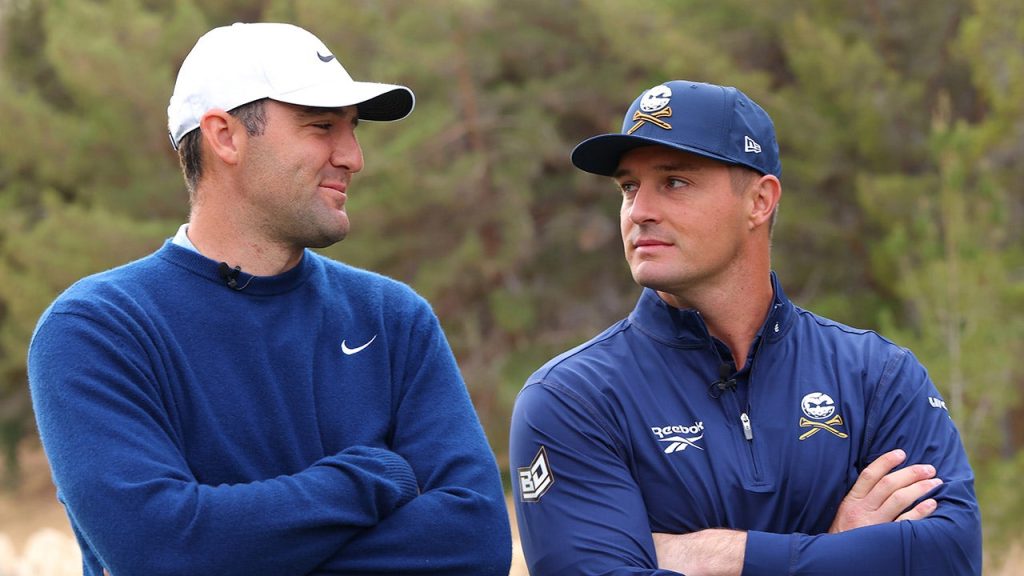The world of professional golf has been embroiled in a dramatic rivalry between the established PGA Tour and the upstart LIV Golf, a Saudi-backed venture that has lured away some of the game’s biggest names with lucrative contracts. This rivalry reached a fever pitch in a made-for-television showdown in Las Vegas, pitting PGA stalwarts Scottie Scheffler and Rory McIlroy against LIV defectors Bryson DeChambeau and Brooks Koepka. The two-on-two match, held at the prestigious Shadow Creek Golf Course, the same venue that hosted the inaugural “The Match” between Tiger Woods and Phil Mickelson, served as a microcosm of the broader tensions and personal narratives that have come to define this golfing feud.
The match was not just a contest of skill but also a clash of personalities and histories. McIlroy, a vocal critic of LIV Golf and its impact on the traditional golfing landscape, found himself facing two players who had embraced the Saudi-backed tour. DeChambeau and Koepka, both major champions, had previously been part of the PGA Tour but were now representing the rival league, adding an extra layer of intrigue to the encounter. The backdrop of the LIV-PGA rivalry added a significant weight to the match, transforming it from a friendly exhibition into a symbolic battle for the future of professional golf.
The on-course drama was amplified by an incident involving DeChambeau’s prodigious driving power. On the second hole, DeChambeau unleashed a monstrous drive that carried an estimated 324 yards, unfortunately striking Scheffler’s father, who was spectating. While the incident appeared accidental, it underscored the raw power on display and injected an unexpected element of tension into the proceedings. The incident, while unfortunate, served as a visceral reminder of the sheer athleticism and power involved in professional golf, adding another layer of drama to the already charged atmosphere.
Adding fuel to the fire were pre-match exchanges between McIlroy and DeChambeau, rehashing a past rivalry stemming from the 2021 U.S. Open. DeChambeau had emerged victorious in that major, capitalizing on McIlroy’s late-round struggles. McIlroy openly admitted his desire to get one back on DeChambeau, while the latter playfully pointed out McIlroy’s self-inflicted wounds in the previous encounter. This back-and-forth banter provided a glimpse into the competitive spirit and underlying tensions between the players, further emphasizing the personal stakes of the match.
The match itself showcased the extraordinary talent assembled on the course. The four golfers boasted a combined 13 major championship victories, highlighting the elite level of play on display. Scheffler and DeChambeau, despite their current affiliations with rival tours, had previously been teammates on the U.S. Ryder Cup team, adding another layer of complexity to their head-to-head matchup. The combination of individual brilliance and team dynamics made for a compelling spectacle, captivating audiences and underscoring the depth of talent in the world of professional golf.
Beyond the immediate results of the match, the event served as a compelling illustration of the ongoing power struggle within professional golf. The LIV-PGA rivalry has reshaped the landscape of the sport, creating new alliances and rivalries while challenging traditional notions of loyalty and competition. The Las Vegas showdown provided a dramatic stage for this conflict to play out, capturing the attention of both avid golf fans and casual observers alike. The event, with its captivating mix of personal narratives, high-stakes competition, and underlying tensions, served as a powerful symbol of the evolving landscape of professional golf.

